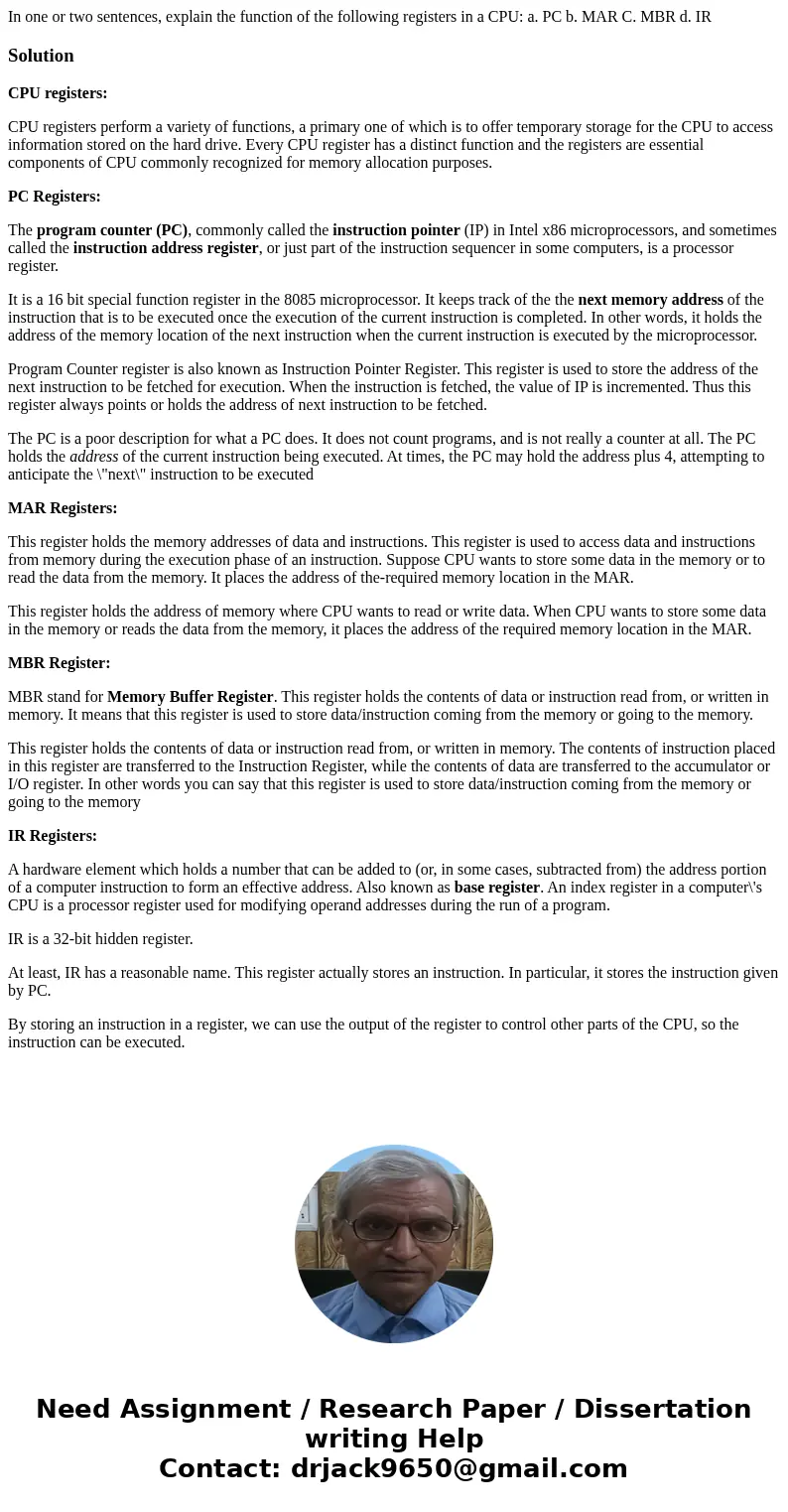In one or two sentences explain the function of the followin
Solution
CPU registers:
CPU registers perform a variety of functions, a primary one of which is to offer temporary storage for the CPU to access information stored on the hard drive. Every CPU register has a distinct function and the registers are essential components of CPU commonly recognized for memory allocation purposes.
PC Registers:
The program counter (PC), commonly called the instruction pointer (IP) in Intel x86 microprocessors, and sometimes called the instruction address register, or just part of the instruction sequencer in some computers, is a processor register.
It is a 16 bit special function register in the 8085 microprocessor. It keeps track of the the next memory address of the instruction that is to be executed once the execution of the current instruction is completed. In other words, it holds the address of the memory location of the next instruction when the current instruction is executed by the microprocessor.
Program Counter register is also known as Instruction Pointer Register. This register is used to store the address of the next instruction to be fetched for execution. When the instruction is fetched, the value of IP is incremented. Thus this register always points or holds the address of next instruction to be fetched.
The PC is a poor description for what a PC does. It does not count programs, and is not really a counter at all. The PC holds the address of the current instruction being executed. At times, the PC may hold the address plus 4, attempting to anticipate the \"next\" instruction to be executed
MAR Registers:
This register holds the memory addresses of data and instructions. This register is used to access data and instructions from memory during the execution phase of an instruction. Suppose CPU wants to store some data in the memory or to read the data from the memory. It places the address of the-required memory location in the MAR.
This register holds the address of memory where CPU wants to read or write data. When CPU wants to store some data in the memory or reads the data from the memory, it places the address of the required memory location in the MAR.
MBR Register:
MBR stand for Memory Buffer Register. This register holds the contents of data or instruction read from, or written in memory. It means that this register is used to store data/instruction coming from the memory or going to the memory.
This register holds the contents of data or instruction read from, or written in memory. The contents of instruction placed in this register are transferred to the Instruction Register, while the contents of data are transferred to the accumulator or I/O register. In other words you can say that this register is used to store data/instruction coming from the memory or going to the memory
IR Registers:
A hardware element which holds a number that can be added to (or, in some cases, subtracted from) the address portion of a computer instruction to form an effective address. Also known as base register. An index register in a computer\'s CPU is a processor register used for modifying operand addresses during the run of a program.
IR is a 32-bit hidden register.
At least, IR has a reasonable name. This register actually stores an instruction. In particular, it stores the instruction given by PC.
By storing an instruction in a register, we can use the output of the register to control other parts of the CPU, so the instruction can be executed.

 Homework Sourse
Homework Sourse